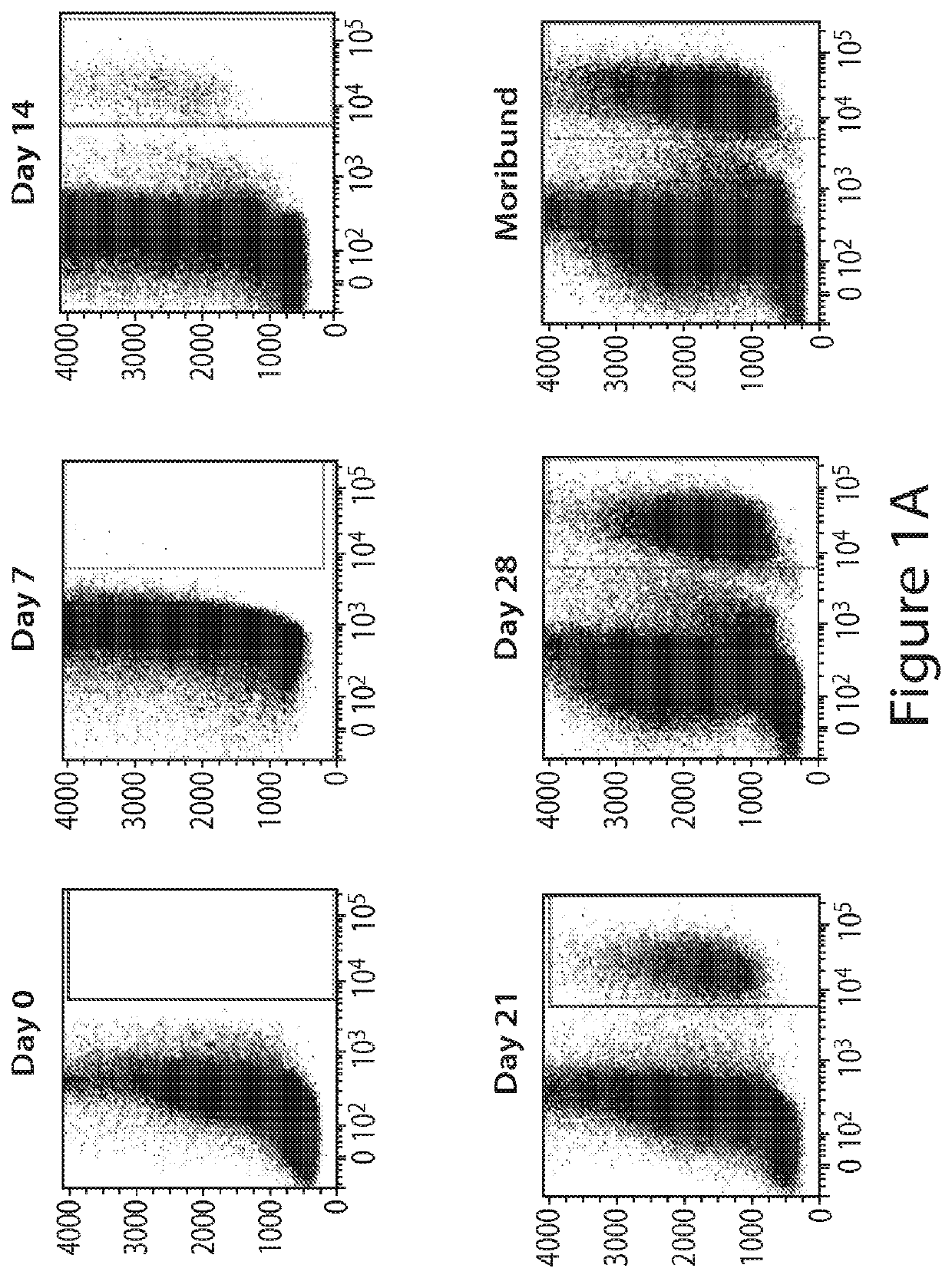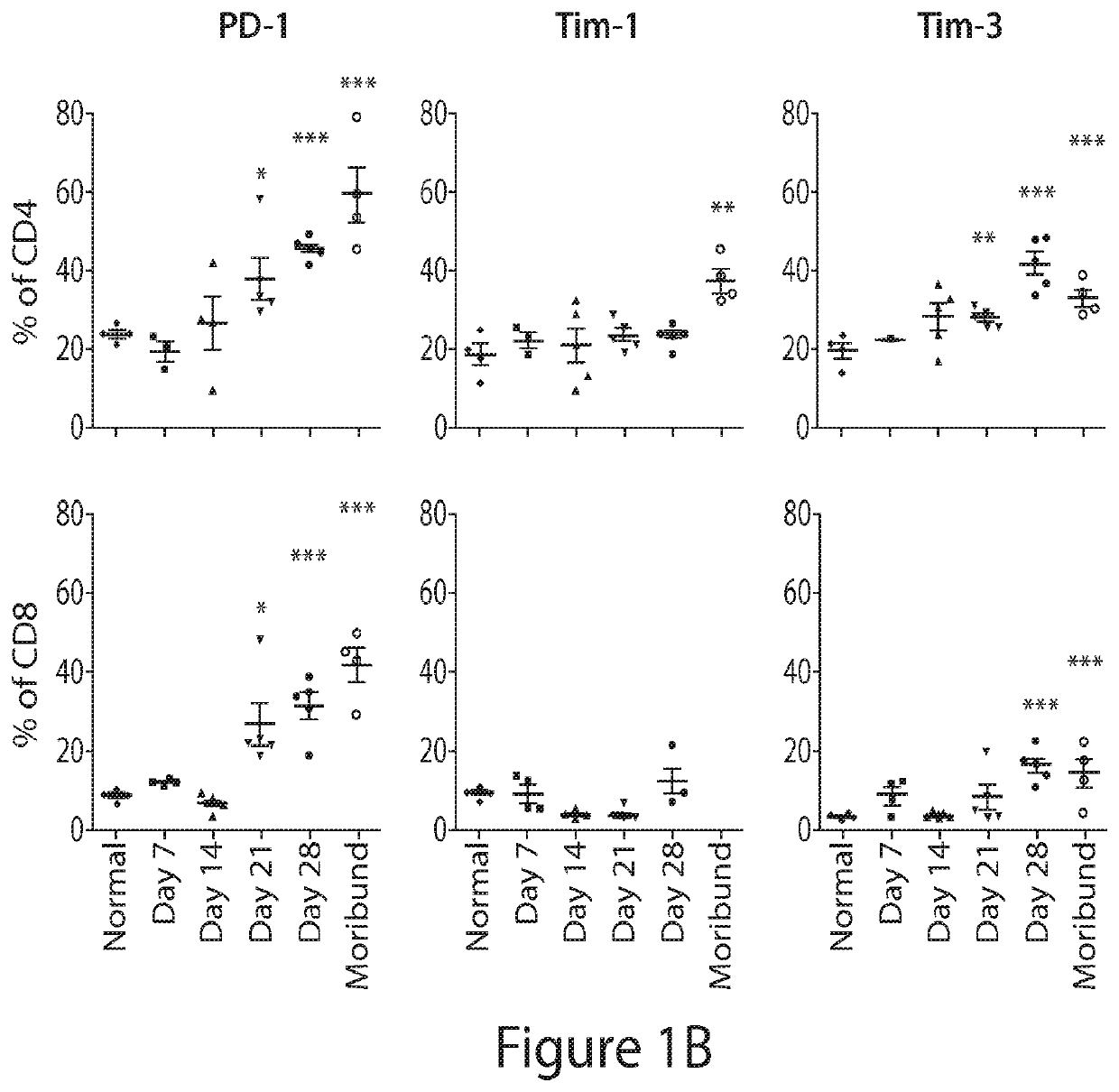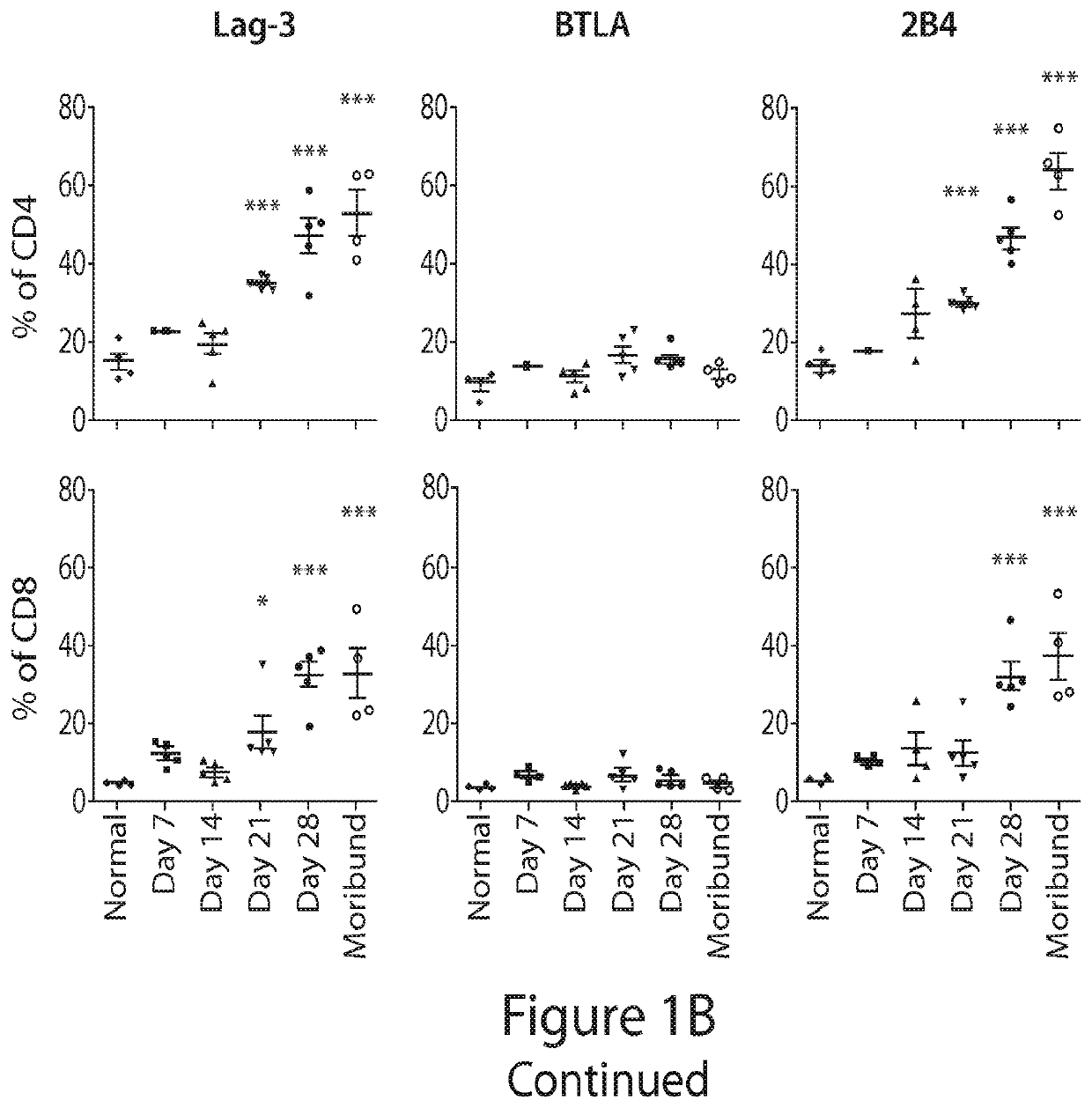Methods for treating hematologic cancers
- Summary
- Abstract
- Description
- Claims
- Application Information
AI Technical Summary
Benefits of technology
Problems solved by technology
Method used
Image
Examples
example 1
PD-L1 and TIM-3 Blockade as Immunotherapy for Hematologic Cancers
a. Materials and Methods
Mice
All mice were housed in the Medical College of Wisconsin Biomedical Resource Center, an AAALAC-accredited facility. C47BL6 / KaLwRij mice were used in the experiments. All animal work was reviewed and approved by the Medical College of Wisconsin Institutional Animal Care and Use Committee.
The 5T33 murine multiple myeloma (MM) cell line was derived from myeloma that spontaneously arose in a C57B1 / KaLwRij mouse (Radl et al. (1988) Am. J. Pathol. 132:593-597; and Manning et al. (1992) Br. J. Cancer 66:1088-1093). For experiments, 5T33 cells were thawed from a large frozen stock and cultured in RPMI 1640+10% fetal bovine serum for no longer than 2 weeks prior to inoculation of mice. Mice were inoculated with tumor as follows: 2×106 5 T33 cells intravenously (i.v.). 5T33-bearing mice were considered moribund and euthanized when they developed paraparesis or paraplegia. Occasionally, 5T33...
example 2
Immune Checkpoint Protein Blockade and Lymphodepletion as Immunotherapy for Hematologic Cancers
a. Materials and methods are essentially the same as described in Example 1 unless specifically indicated below in the “Results” section below.
b. Results
As shown in this Example, combined immune checkpoint protein blockade and lymphodepletion provide an effective immunotherapy for hematologic cancers such as myeloma.
Blocking of PD-L1 in Combination with Tim-3, Lag-3 or CTLA-4 after Lymphodepleting Whole Body Irradiation Synergistically Improved Survival
FIG. 9A depicts the experimental design. KaLwRij mice received 500 cGy irradiation 7 days after tumor cell inoculation. The treatment with blocking antibody or control IgG (200 μg i.p.) was initiated 5 days later and specifically given 12, 14, 19, 21, 26, and 28 days after tumor inoculation.
As shown in FIGS. 9B-9D, blocking PD-L1 in combination with Tim-3 (FIG. 9B), Lag-3 (FIG. 9B), or CTLA-4 (FIG. 9C) after lymphodepleting whole body irradi...
PUM
| Property | Measurement | Unit |
|---|---|---|
| frequency | aaaaa | aaaaa |
| frequencies | aaaaa | aaaaa |
| cell frequencies | aaaaa | aaaaa |
Abstract
Description
Claims
Application Information
 Login to View More
Login to View More - R&D
- Intellectual Property
- Life Sciences
- Materials
- Tech Scout
- Unparalleled Data Quality
- Higher Quality Content
- 60% Fewer Hallucinations
Browse by: Latest US Patents, China's latest patents, Technical Efficacy Thesaurus, Application Domain, Technology Topic, Popular Technical Reports.
© 2025 PatSnap. All rights reserved.Legal|Privacy policy|Modern Slavery Act Transparency Statement|Sitemap|About US| Contact US: help@patsnap.com



